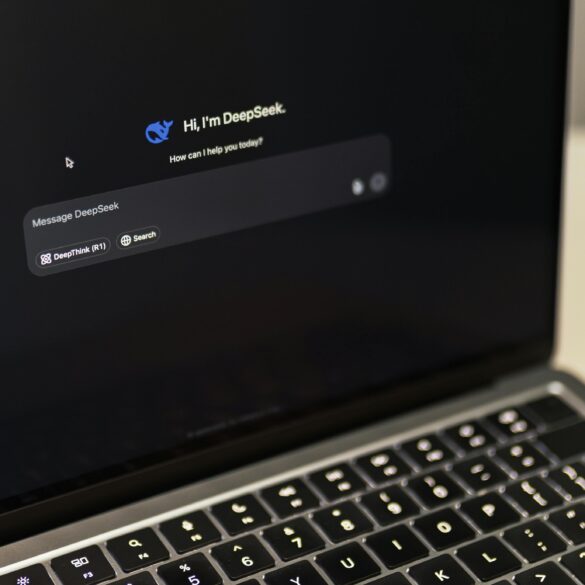Best Strategies to Optimize Passive Investing in Index Funds in Belgium
Let’s not beat around the bush: “passive investing” has gone from a niche practice debated in university finance classrooms to the money-smart strategy of choice for tens of thousands of Belgians—and for good reason. When I first opened my own brokerage account in Belgium (was it nine, ten years ago now?), the idea of putting your hard-earned money into something as—well, let’s call it “boring”—as an index tracker was far less common. These days, with new brokers popping up every year and index ETF fees dropping like stones, it’s practically a rite of passage. Still, most folks, myself included, have to wade through a minefield of tax quirks, product confusion, and endless debates about “optimal” portfolios. If you’ve ever wondered, “Am I getting the most out of my index investing in Belgium?” you’re far from alone.
In this comprehensive guide, I’ll pull back the curtain—not just on what works most effectively here in Belgium (which is trickier than it looks), but also on some dead-simple optimizations too many local investors miss. My approach leans heavily on hard-learned lessons, regulatory context, and a few head-slapping mistakes along the way. Is there one “best” answer or portfolio? Spoiler: not even close. But there is a path to smarter, stress-free investing tailored for Belgians looking to harness the full potential of passive index funds. Let’s walk through it—warts, wins, and all.
Why Passive Investing Wins in Belgium
Here’s the first thing you might find surprising: Belgium, despite its modest size and quirky federal complexities, is actually a near-ideal environment for disciplined, hands-off investing through index funds. Now, I won’t sugarcoat the constraints—Belgian investors face fee structures, cross-border nuances, and a “fonds tax” that simply does not exist for our Dutch or French neighbors. Still, when done right, passive investing here offers several advantages:
- Consistently low-cost access via locally available ETFs (especially UCITS-compliant ones)
- Simple tax reporting for most popular index products
- A regulatory framework that prefers investor protection and product transparency1
But—and this is crucial—Belgium’s particular tax and fund environment means what “works” in the U.S. or UK might be hugely suboptimal here. I spent years wrongly assuming that any S&P 500 ETF was basically the same, only to discover a frustrating tax surprise during my first “compte-titres” audit. So, Belgian passive investing is part universal wisdom, part charming (or aggravating) local idiosyncrasy.
Belgium was among the first EU countries to mandate UCITS-compliance for all ETFs offered to retail investors—a move that, in practice, means Belgian investors have perhaps the “safest” selection of global index trackers available. On the flip side, it’s nearly impossible for Belgians to legally purchase U.S.-domiciled ETFs via domestic brokers, which changes everything in terms of tax and tracking error considerations in your portfolio.
How Index Funds Actually Work (and Why Most People Misunderstand Them)
Confession: when I first got into index investing, I thought I knew what I was doing—turns out, I didn’t. Common wisdom makes things sound simple: “buy the whole market, sit back, get rich.” But here’s the problem: not all index funds are created equal, and not all indexes make sense depending on your risk, goals, and—let’s not forget—your Belgian tax situation. Fundamentally, an index fund is designed to track a benchmark (e.g., MSCI World, S&P 500, Euro Stoxx 50), rebalancing automatically to mirror the rises and falls of those selected stocks2. It sounds passive (and in management terms, it is), but, ironically, your choice of index, ETF structure, and domicile is anything but passive.
What really strikes me is that most Belgians still perceive an “index tracker” as completely interchangeable regardless of provider or underlying index. My perspective has changed: optimizing your fund choice in Belgium is often about the details—domicile, dividend distribution, even the tax status of accumulating versus distributing trackers—a fact that can make a 0.5% or greater difference in net returns every year.
Now, as clear as this sounds, many foreigners can simply buy U.S. ETFs for lower expense ratios and higher liquidity. Belgians must (with few exceptions) stick with EEA/UCITS-funds—a detail that shapes your entire investment journey here, from ETF selection right down to the tax you pay on sale.
“Successful investing is about managing risk, not avoiding it.”
That sentiment continues to shape my own philosophy, especially in Belgium, where avoiding unnecessary tax drag and cost is how you truly manage risk. But more on that later. First, let’s clarify why Belgium’s tax system both helps and hinders the passive dream.
Belgium’s Unique Tax Landscape: More Nuanced Than You Think
Now, let’s pause right here. Because if you’re Belgian (or investing while living in Belgium), you already know how taxes quietly shape all your financial decisions. In fact, I used to think, “Surely the most tax-efficient ETF must be the best choice.” Actually, that’s true—up to a point. But the devil is in the details, and Belgian tax context matters more for passive investing than in almost any other Eurozone country.
- No direct capital gains tax on listed stocks and most ETFs held as a private individual
- A 30% withholding tax on dividends from Belgian-domiciled funds (and foreign ones, up to some treaties)
- The “Reynders Tax” (TOB): 0.12–1.32% transaction tax depending on product category, applied when buying/selling
- A 0.15% annual securities (wealth) tax for accounts exceeding €1 million
- Withholding tax on interest earned by bond index funds
Here’s where it gets tricky (I’ve tripped up myself): accumulating (capitalizing) funds reinvest dividends internally, so you aren’t hit by the dividend withholding tax each year. Distributing (payout) ETFs, on the other hand, pay out and you pay tax annually. For most Belgian index investors (myself included after too many late nights with spreadsheets), accumulating UCITS ETFs are simply more tax efficient3.
If your main goal is long-term growth, always check for accumulating share classes (fondstype: “acc/accumulation/capitalization”) and UCITS compliance before purchasing.
Choosing the Right Belgian Broker & Product: Not All Are Equal
I remember my first ETF purchase through a local Belgian bank—clunky interface, outrageous fees, and a product menu baffling even for seasoned investors. Today, we have much better options, but choosing a broker still requires a thoughtful decision—not least because total cost (broker fee + fund TER + taxes + TOB!) matters a lot. Also, not every “passive fund” on the Belgian market is actually optimized for cost or ease-of-use. My advice, after years of broker-hopping? Start with the following checklist:
- Prefer online brokers that offer clear, transparent fees and easy tax reporting (look for breakdowns of Belgian TOB and withholding taxes).
- Go for EEA (European Economic Area)/UCITS ETFs—double-check this, as a few non-UCITS “trackers” still slip into Belgian platforms.
- Check for available (and affordable) accumulating classes—these usually end with “Acc.”
- Compare all-in costs: TER and expected transaction/FX fees (use cost calculators if available).
- Look into trading venues—some brokers offer wider selection on Euronext, others on Xetra/London.
Now, as painful as broker selection can be, a few names come up again and again among Belgian investors (DeGiro, Bolero, Keytrade, etc.). Each has strengths—a topic ripe for a deep-dive, but beyond our focus here—though my experience is that the cheapest is seldom the easiest and vice versa.
| Broker | Best for | Notes | Sample ETF Offerings |
|---|---|---|---|
| DeGiro | Low fees, wide ETF access | Manual tax reporting needed | iShares MSCI World Acc, Vanguard FTSE All-World |
| Bolero | Belgian support, integrated tax docs | Slightly higher trading fees | Amundi MSCI World Acc, Lyxor Euro Stoxx 50 Acc |
| Keytrade | Full-service platform | Good for beginners; broader financial services | Mainstream ETF selection |
Once, I bought a distributing ETF by mistake because the broker interface didn’t flag the difference (acc vs. dist). That single clerical oversight cost me hundreds—in annual taxes and tracking errors—over several years. Always double-check product details before you trade. Trust, but verify.
Portfolio Construction & Rebalancing for Belgian Investors
Everyone wants a “perfect” Belgian passive portfolio—and let me tell you, opinions on this are endless. I used to believe in granular slicing (“I need a Belgian equity ETF, an emerging market ETF, and maybe a Eurozone bond tracker…”). Honestly? Too much complexity for most retail investors ends up biting back in rebalancing costs and, ironically, may reduce returns.4
- Start broad: For most Belgians, a single “global stocks” index (MSCI World or FTSE All-World) covers 70–80% of your needs.
- Add an EU government bonds ETF only if you genuinely seek “stability”—but beware the Reynders tax on bond returns.
- If you must tilt (e.g., more emerging markets, ESG)—add small weights, but do the math on transaction and product costs.
- Rebalance no more than 1–2x per year to avoid unnecessary TOB (transaction tax).
“Time in the market beats timing the market—especially when fees and taxes quietly erode returns.”
For Belgians, less is more. The more I read, the more I realize the big value is in minimizing friction—not maximizing asset “exposure.” That’s counterintuitive, but it’s true: cost and taxes destroy most of the marginal benefit of extra themes or tactical tweaks.

Optimizing Cost and “Tax Drag”: The Belgian Hack List
Now, let me get practical. As someone who’s spent far too many evenings with spreadsheets and Belgian tax PDFs scattered across my living room, here are the core cost-saving moves that actually matter—beyond the cliché of “pick low TER” everyone parrots:
- Always aggregate orders—Batch your ETF purchases to minimize the TOB. Weekly nibbling? Often much more expensive than two big buys a year.5
- Use accumulating ETFs—This is the “tax drag” secret: accumulating share classes avoid annual dividend withholding taxes until you sell years later.
- Favor EUR-denominated ETFs—Integrated in Belgium’s banking system. Otherwise, you risk stacking up expensive FX conversion fees at every transaction.
- Track all-in cost, not just TER—Many investors (my old self included) only watch published TER, forgetting that transaction taxes and broker-specific charges can cost as much or more.
Here’s where a little country knowledge goes a long way: Belgium’s convoluted TOB bands mean small, frequent trades are iffy, and “free” ETF lists on brokers might not be Belgian tax-optimized. The tip? Always simulate the total cost through your chosen platform before executing—a simple spreadsheet (or one of the many “ETF cost calculators” now widely available online) saves real money.
| Optimization Tactic | Frequency/Timing | Belgian Benefit | Watch Outs |
|---|---|---|---|
| Batch rebalancing | Semi-annual | Minimizes TOB | Misses small rebalance “opportunities” |
| Use accumulating share classes | Always | Defers dividend tax until sale | Complicated if you move country later |
| Run cost simulations | Annually | Catches fee hikes | Requires effort and clarity on fee structure |
I’d love to interview a Belgian tax expert who can explain (in plain Flemish or French) what really triggers “unexpected” wealth or securities taxes for ordinary ETF investors. If you’re a professional in this field, your input could save hundreds—if not thousands—for everyday readers.
Avoiding Behavioral and Psychological Pitfalls (The Real “Drag” on Returns)
Touching on numbers and taxes is the easy part. The hardest bit? Ourselves. I’ll admit, the urge to “tweak,” “optimize,” or “panic sell” after reading the latest financial news is, by and large, my own worst enemy. Over the years, and especially after meeting dozens of Belgian index investors, I’ve noticed the same cognitive traps every time:
- Performance-chasing: Jumping ship for last year’s “hot” ETF, often at exactly the wrong time.
- Over-diversifying: Thinking more ETFs = more safety, when all that’s achieved is cost.
- Underreacting to costs: “It’s just one trade” – until 20 “just one trades” later, you lose 1%.
- Buying the dip (without a plan): A Belgian classic, especially around election cycles or during Eurozone crises.
“In investing, what is comfortable is rarely profitable.”
To be blunt, the best Belgian ETF investors I know win not by intellectual superiority, but by automating their process and ignoring noise. I’m still learning this, honestly—I go back and forth on whether to “override” my plan every time a big market crash appears in the headlines.
Three Behavioral “Safety Nets” That Actually Work
- Automate investments via monthly bank transfers or standing orders (if your broker allows it)
- Write down your “investment rules” (no market timing, one rebalance date annually) and keep them visible
- Join a Belgian ETF community or support group for accountability
Two years ago, I nearly derailed my own plan by doomscrolling recession headlines; it was a community forum (full of “do nothing!” reminders) that got me back on track. Don’t go it alone—leverage the “herd” in a positive way!
Case Studies, Real Q&A, and Belgian ETF Anecdotes
Let’s shift from theory to reality. Over the past year, I’ve spoken with dozens of Belgian retail investors—plus a handful of financial planners. Three real scenarios stick out, all with practical lessons:
- Sven from Ghent started with three ETFs, all distributing, via a local bank. After two years, he switched to a single global accumulating ETF on DeGiro and improved after-tax returns by 0.45% per year. Key lesson? Simplicity plus tax-efficiency beats “fancy” portfolios.
- Anaïs in Brussels chose a higher-TER ESG world fund, thinking the “label” alone mattered. Upon closer review (and an online calculator), she found the added expense ratio neutralized any outperformance. Lesson learned? Always check costs against potential benefit.
- Pieter in Leuven, after being burned with “timing” his first market downturn, now pre-writes all ETF trades at the start of each year. Emotional detachment, as Pieter says, is “more Belgian than beer!”
The Strategic Guide to Passive Index Investing in Belgium: Key Takeaways
Looking back through my own investment journey (with all its missteps and surprise taxes), there are a few “truths” I’ve landed on for Belgians hoping to optimize their passive index investing:
- ETF selection is critical: Always pick EEA/UCITS, accumulating share classes, denominated in EUR when possible
- Avoid unnecessary complexity: A “core and satellite” approach or—even simpler—one global equity index covers 80+% of what you need
- Automate where possible: Combat psychological pitfalls and transaction taxes by batching trades and limiting intervention
- Simulate total cost (TER, TOB, broker, FX): This beats chasing “performance” or “past returns” every time
- Prioritize real after-tax returns over hype, trends, or bells and whistles
Pick ONE thing to optimize in your portfolio this week—whether it’s consolidating ETFs, running a cost simulation, or simply writing down your passive investing rules—and commit to it. Change is best made incrementally, not all at once.
“The most important part of an investment plan is sticking to it—especially when everyone else seems to be abandoning theirs.”
Keeping Your Strategy Future-Proof and Adaptable
If I’ve learned anything from the past decade (Brexit, Eurozone mini-dramas, global ETF proliferation), it’s that Belgian investing will keep evolving. The best passive strategy isn’t static; it’s flexible, optimized for current law and product sets, but ready to adapt. Put bluntly: don’t get married to a particular ETF or broker—regulations, fees, and even “tax drags” can all change. Revise once a year, track international ETF launches, and don’t be afraid to update your written rules as the world (and your life) shifts.7
And for those feeling overwhelmed? Know that even the savviest Belgian investors still face moments of confusion and indecision—what matters is staying in the game, learning, and sharing insights. I’m still adjusting my own plan (one that’s far, far simpler than when I began), and I hope these tips, mistakes, and stories help you craft the optimized, “sleep-easy” passive investing approach you deserve.
None of us are finished learning. Contribute to Belgian passive investing forums and share updates—the next optimization breakthrough could come from your own question or discovery!
References & Further Reading



